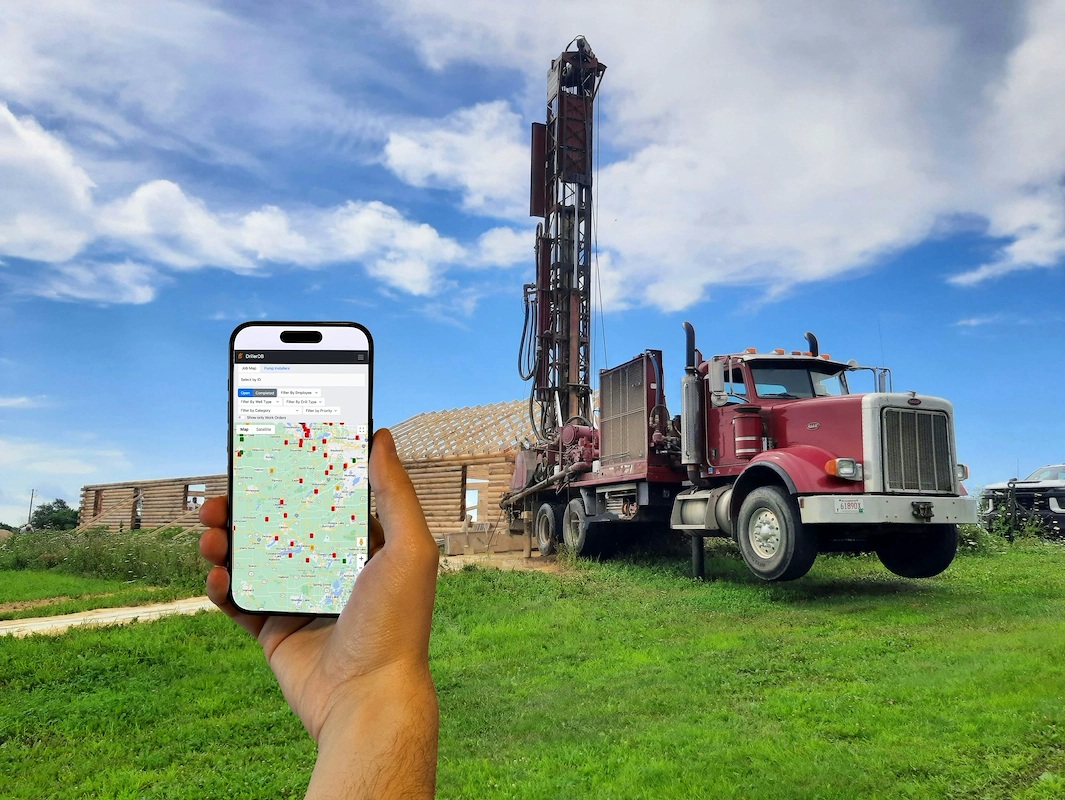When you ask what is nfc, you're asking about the technology behind your daily tap-to-pay convenience. It's a simple, secure way for devices to communicate instantly just by being close to each other.
But its use goes beyond just payments. NFC is a short-range wireless technology that also helps you pair headphones, share photos with a tap, or even use your phone as a digital key, simplifying many of your daily interactions.
How does the technology work?
NFC operates using short-range radio waves to create a direct link between two enabled devices. When you bring your device close to another—typically less than two inches away—they establish an instant connection.
One device generates a weak electromagnetic field that can power a second, passive device, like a tag without its own battery. This field also serves to securely transfer your data across the small gap between the two.
This connection uses a magnetic induction principle, and its short range is a key security feature. The proximity requirement prevents accidental interactions or unauthorized access from other nearby devices.
The different modes of operation
To fully understand what is NFC, you need to know its three distinct operational modes, which allow it to perform different tasks. Each mode determines how your device interacts with other NFC-enabled hardware.
- In reader/writer mode, your phone acts as a scanner to read or write information on an NFC tag. You use this when tapping a smart poster to open a website or getting product details in a store.
- In peer-to-peer (P2P) mode, two NFC-enabled devices can actively exchange information. This is useful when you want to share a contact, photo, or file with someone by tapping your phones together.
- In card emulation mode, your smartphone functions as a physical contactless card. It's the technology you use for tap-to-pay services, digital transit passes, or keyless entry systems for offices and hotels.
Practical uses in daily life
Now that you understand what is NFC and how it functions, you can see its practical uses all around you. This technology is designed to make your daily interactions faster and more convenient.
It has become a key part of many common activities, from how you pay for groceries to the way you connect your electronic devices.
Making contactless payments
Contactless payments are one of the most popular uses for NFC. With services like Apple Pay and Google Pay, your smartphone becomes a digital wallet, letting you pay just by tapping it on a compatible terminal.
You just hold your device near the reader, and the transaction is done in seconds. This method is also highly secure to protect your actual card details.
Sharing data between devices
NFC provides a simple way for you to share information directly between two compatible devices. By just tapping them together, you can instantly transfer small amounts of data without any complex setup.
This is perfect for sending a contact, a photo, or a website link to a friend. For larger files, NFC can also establish an initial connection that triggers a faster transfer over Bluetooth or Wi-Fi Direct.
Pairing with other electronics
Pairing Bluetooth devices like headphones or speakers can sometimes be a hassle. You often have to search for the device, select it from a list, and hope it connects without an error.
NFC simplifies this entire process. You just tap your phone to an NFC-enabled speaker or headset, and it pairs them automatically, skipping the manual search and confirmation steps entirely.
Automating tasks with tags
Automating tasks is a creative way to leverage what is nfc technology. You can program inexpensive NFC stickers or key fobs to perform custom routines on your smartphone with a single tap.
For example, place a tag on your nightstand to automatically silence your phone and set an alarm. Put another in your car to instantly launch a navigation app and connect to your Bluetooth system.
You can use a tag to let guests connect to your Wi-Fi without typing a password. These small automations remove extra steps, making your environment smarter and more responsive.
Is the technology secure?
When you learn what is NFC, it's natural to question the security of a wireless technology that handles your personal data. The idea of information being transmitted through the air can seem risky, especially for payments.
However, NFC technology was designed with security as a core principle. Several key features, including its short communication range, work together to protect your information and make it a safe option for daily use.
Key security features and protocols
Several layers of security are built into NFC. The most fundamental is its short range. A transaction can only occur when devices are less than two inches apart, which prevents accidental payments or remote data theft.
For payments, your data is protected through tokenization, which replaces your card number with a one-time-use code. All data is also encrypted, so it remains unreadable even if intercepted.
How to protect your data during use
While what is NFC technology is secure by design, you can take simple steps to add another layer of protection to your data. Following good mobile security habits ensures your information stays safe.
- Always use a strong screen lock, like a PIN, fingerprint, or face ID, as your phone requires this authentication before allowing a payment.
- Be cautious about tapping your phone on NFC tags from unknown or untrustworthy sources, as they could direct you to malicious websites.
- Keep your device's operating system and all your applications updated to receive the latest security patches and features.
- As an extra precaution, you can choose to temporarily turn off your phone’s NFC function in its settings menu when you aren't using it.
NFC vs. bluetooth: what's the difference?
Understanding what is nfc often involves comparing it to other wireless technologies like Bluetooth. While both let your devices communicate without cables, they are designed for very different tasks and operate in fundamentally distinct ways.
The primary differences come down to their communication range, power consumption, and setup speed, which makes each technology better suited for specific jobs.
Range and power consumption
The most significant difference lies in their effective range. NFC is designed for close proximity, operating at less than 1.5 inches (4 cm).
In contrast, Bluetooth can connect your devices from up to 33 feet (10 meters) away.
This directly impacts power consumption. NFC uses very little energy, and its passive tags require no battery at all. Bluetooth needs more power to maintain its longer-range connection, though its Low Energy (BLE) variant is more efficient.
These differences define their roles. NFC's short range is ideal for secure, quick taps like payments, while Bluetooth is built for sustained connections where you need more freedom of movement with your devices.
Speed and common use cases
When it comes to speed, the two technologies excel in different ways. NFC offers a nearly instant connection—it takes less than a tenth of a second for two devices to establish communication.
Bluetooth, on the other hand, takes several seconds to pair but offers much faster data transfer rates. NFC's speed maxes out at 424 kbit/s, while Bluetooth can handle over 2 Mbps.
This difference explains their distinct use cases. NFC is perfect for when you need a fast connection for quick interactions, like making a payment or tapping a tag.
Bluetooth is built for continuous data streaming, which you use for listening to music on wireless headphones or transferring large files.
Put NFC technology to work for your business
NFC simplifies daily life with secure, contactless interactions. This same technology allows you to accept payments directly on your iPhone, turning your device into a point-of-sale without extra hardware.
JIM uses your iPhone's built-in NFC for secure transactions. Accept cards and digital wallets easily, providing a seamless checkout experience for your customers.
Discover how to turn your iPhone into a payment terminal















